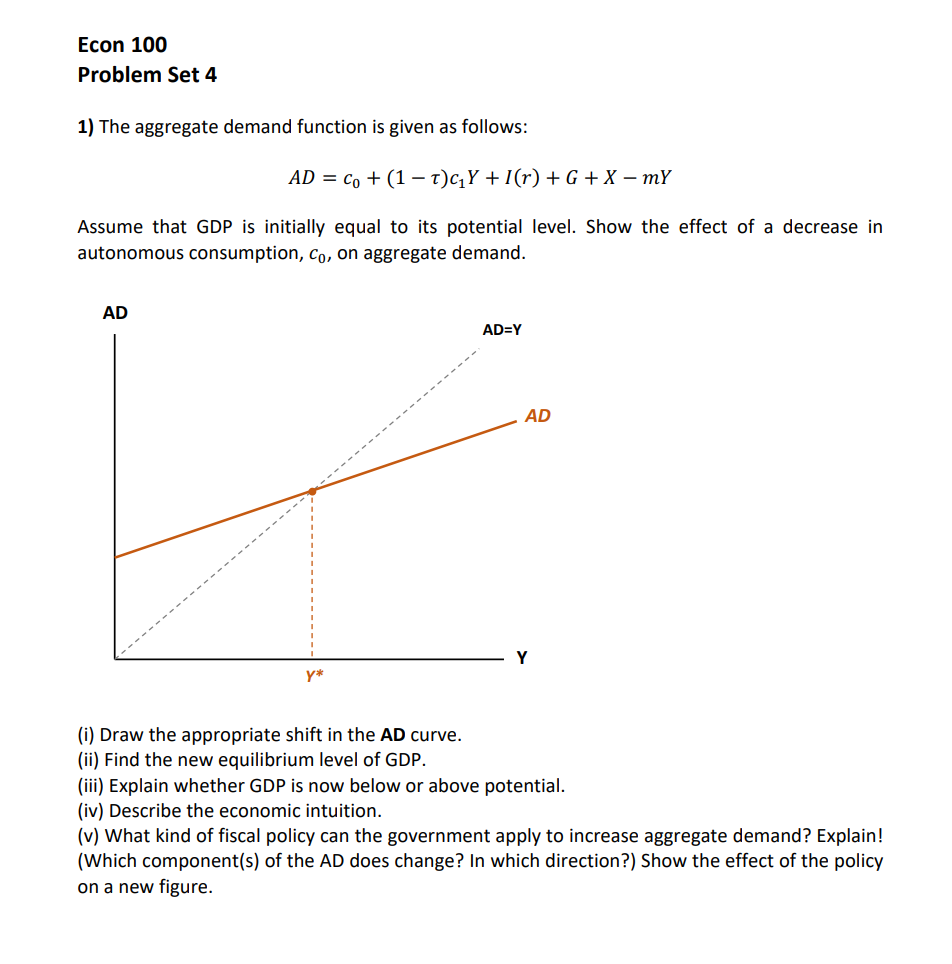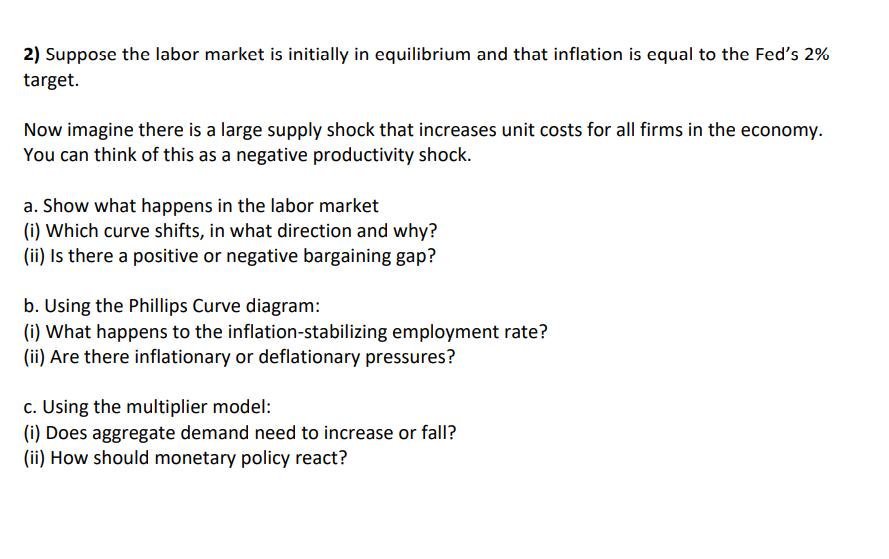Answered step by step
Verified Expert Solution
Question
1 Approved Answer
Econ 100 Problem Set 4 1) The aggregate demand function is given as follows: AD = Co + (1 t)cY+I(r) + G + X-mY


Econ 100 Problem Set 4 1) The aggregate demand function is given as follows: AD = Co + (1 t)cY+I(r) + G + X-mY Assume that GDP is initially equal to its potential level. Show the effect of a decrease autonomous consumption, Co, on aggregate demand. AD y* (i) Draw the appropriate shift in the AD curve. (ii) Find the new equilibrium level of GDP. AD=Y AD (iii) Explain whether GDP is now below or above potential. (iv) Describe the economic intuition. (v) What kind of fiscal policy can the government apply to increase aggregate demand? Explain! (Which component(s) of the AD does change? In which direction?) Show the effect of the policy on a new figure. 2) Suppose the labor market is initially in equilibrium and that inflation is equal to the Fed's 2% target. Now imagine there is a large supply shock that increases unit costs for all firms in the economy. You can think of this as a negative productivity shock. a. Show what happens in the labor market (i) Which curve shifts, in what direction and why? (ii) Is there a positive or negative bargaining gap? b. Using the Phillips Curve diagram: (i) What happens to the inflation-stabilizing employment rate? (ii) Are there inflationary or deflationary pressures? c. Using the multiplier model: (i) Does aggregate demand need to increase or fall? (ii) How should monetary policy react? Econ 100 Problem Set 4 1) The aggregate demand function is given as follows: AD = Co + (1 -t)cY+I(r) + G + X -mY Assume that GDP is initially equal to its potential level. Show the effect of a decrease autonomous consumption, Co, on aggregate demand. AD y* (i) Draw the appropriate shift in the AD curve. (ii) Find the new equilibrium level of GDP. AD=Y AD (iii) Explain whether GDP is now below or above potential. (iv) Describe the economic intuition. (v) What kind of fiscal policy can the government apply to increase aggregate demand? Explain! (Which component(s) of the AD does change? In which direction?) Show the effect of the policy on a new figure. 2) Suppose the labor market is initially in equilibrium and that inflation is equal to the Fed's 2% target. Now imagine there is a large supply shock that increases unit costs for all firms in the economy. You can think of this as a negative productivity shock. a. Show what happens in the labor market (i) Which curve shifts, in what direction and why? (ii) Is there a positive or negative bargaining gap? b. Using the Phillips Curve diagram: (i) What happens to the inflation-stabilizing employment rate? (ii) Are there inflationary or deflationary pressures? c. Using the multiplier model: (i) Does aggregate demand need to increase or fall? (ii) How should monetary policy react?
Step by Step Solution
There are 3 Steps involved in it
Step: 1
Sure Lets go through each part step by step i To show the effect of a decrease in autonomous consump...
Get Instant Access to Expert-Tailored Solutions
See step-by-step solutions with expert insights and AI powered tools for academic success
Step: 2

Step: 3

Ace Your Homework with AI
Get the answers you need in no time with our AI-driven, step-by-step assistance
Get Started


